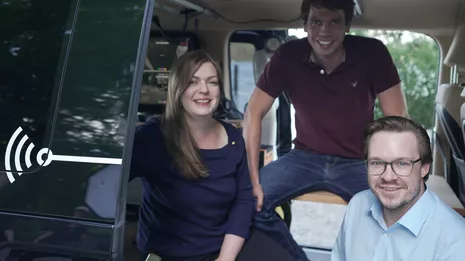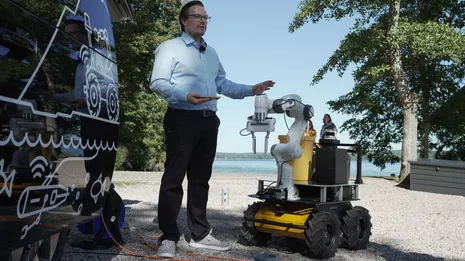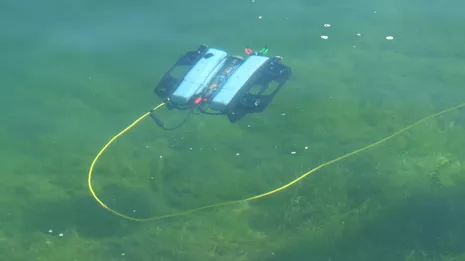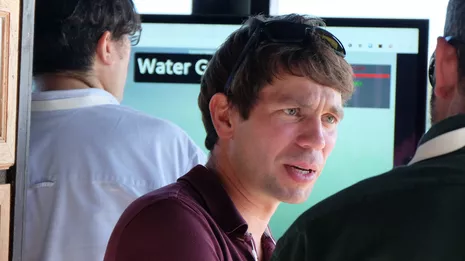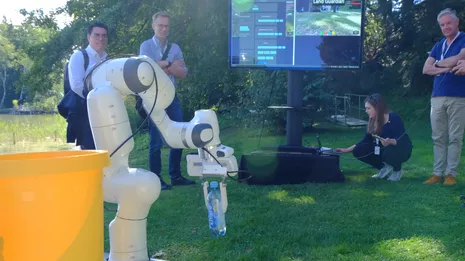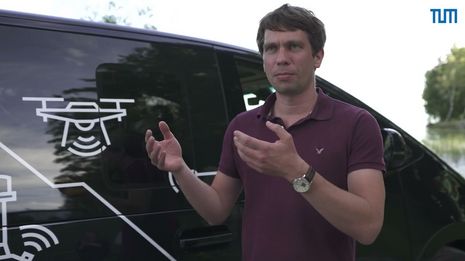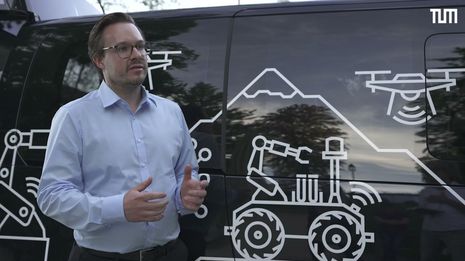Prototype in Environmental Mission: MIRMI Develops Mobile Robot Hub
NEWS, Environment, Robotics, Artificial Intelligence |
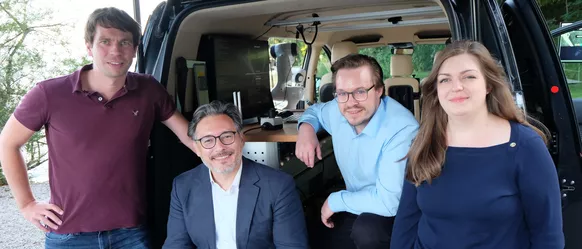
Measuring half a meter in length and 30 centimeters in width, the small underwater robot equipped with a gripper is being deployed by Daniel Dücker in Lake Starnberg. It is remotely controlled from a laptop at the boat dock. Under the challenging underwater conditions, even its specialized camera provides a visibility of only about 1.50 meters. Just enough to discover, grasp, and bring to the shore discarded bottles or plastic bags. "It doesn't matter whether I'm sitting here on the boat dock or in the office in New York: This submarine can be controlled remotely," explains Dücker, a researcher at the Munich Institute of Robotics and Machine Intelligence (MIRMI) at the Technical University of Munich (TUM). The reason for this is a 50-centimeter-long white tube attached to the bus. It enables data transmission in 5G, almost in real-time. The other robots on board the bus can also be operated remotely, such as the land robot named Husky equipped with a gripper for prototype demonstration, which collects trash, or the drone that provides an aerial overview of an area and uses artificial intelligence to identify environmental anomalies like bottles.
Telepresence Operating System for Robots: Making the Impossible Possible
The researchers at TUM started four years ago. At that time, there was only the idea of a mobile robotics hub that connects environmental experts and robots engaged in environmental missions around the world. The special aspect was that the robots should not only act independently but also work together as a team, with each robot bringing its own specialized abilities and complementing each other. However, the journey from idea to practice was long. It took months for the technology to run reliably and for the first trash to be remotely retrieved from Lake Starnberg or collected by a land robot. "We had to organize, develop, and research," says researcher Anna Adamczyk, who has been involved from the beginning.
High-Tech Prototype in SVAN: Making Robotics Easy from Anywhere
In principle, any robot can be added to the existing prototype. "With our platform, we can make completely different robots usable for anyone in the world," explains Dücker.
Alexander Moortgat-Pick: Environmental robotics is what we want to establish.
To demonstrate how the SVAN concept can be used in the future, the research team focused on how robotics can help remove trash from water and the environment, supported by a drone that identifies polluted areas. This information is then available to the other robots of the SVAN. It is expected that the system can become increasingly autonomous in the future, according to researcher Alexander Moortgat-Pick.
Prototype in Environmental Mission: Supported by Dobeneck Technology Foundation, Backed by Hyundai, Developed by TUM
The South Korean automaker Hyundai sees sustainability as an important mission. "Finding clear business models with special benefits for society," describes Florian Büngener of Hyundai Motor Europe the mission of the SVAN project's cooperation partner at the launch of the prototype at Lake Starnberg. Christian Hackl, a board member of the Dobeneck Technology Foundation, the original sponsor, sees an important goal in bringing environmental technology applications into real life and is therefore pleased with the prototype created by TUM researchers. And Prof. Sami Haddadin, Executive Director of MIRMI, explains, "we are creating something like an artificial immune system" for the planet to address the major challenges of the future – "technology is a key to protecting our planet."
Air, Water, and Land Guardians: Platform Democratizes Robotics
What makes SVAN special is that the platform democratizes robotics applications. Anyone who wants to use the robots can control them from anywhere in the world with just a laptop with internet access and a browser – whether a biologist, geologist, or chemist. They receive real-time data. TUM calls the three robots deployed at Lake Starnberg "Air, Water, and Land Guardians." They are the starting point for services and concrete applications that will emerge in the coming years. "SVAN can be used in infinitely many configurations," TUM Professor Haddadin is convinced, "this is just the beginning".
Further Information you also find on the corporate website of cooperation partner Hyundai.

